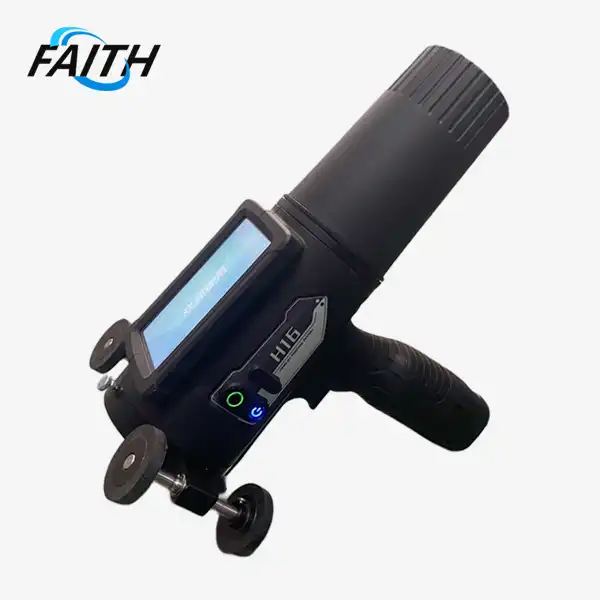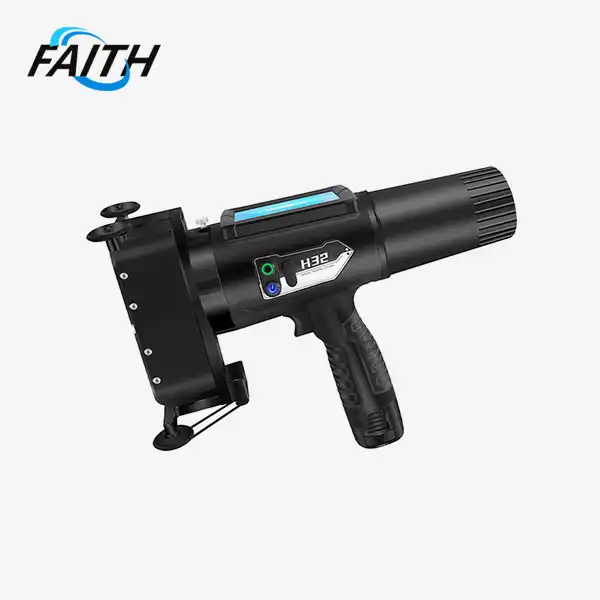Improve Logistics with the Right LCM Printer for Tracking
Large Character Marking (LCM) Printers have revolutionized logistics tracking, offering a robust solution for businesses seeking to enhance their supply chain efficiency. These advanced printing systems enable clear, durable marking on various surfaces, facilitating easy identification and traceability of products throughout the logistics process. By implementing the right LCM printer, companies can significantly improve their inventory management, reduce errors, and streamline their overall logistics operations. The key lies in selecting a printer that aligns with specific business needs, offering features like high-resolution printing, versatile substrate compatibility, and user-friendly interfaces.
Understanding Large Character Marking (LCM) Printers and Their Impact on Logistics
Large Character Marking (LCM) Printers are sophisticated devices designed to print large, legible characters on various packaging materials. These printers play a crucial role in modern logistics by enabling clear and accurate product identification, which is essential for efficient tracking and inventory management. LCM printers utilize advanced technologies to produce high-quality prints that remain visible and durable throughout the supply chain process.
The impact of large character inkjet printers on logistics is profound. They enable businesses to create standardized, easily scannable codes and markings that facilitate automated tracking systems. This automation significantly reduces human error in inventory management and improves the speed and accuracy of order fulfillment. Moreover, the ability to print real-time information, such as production dates, batch numbers, and shipping details, enhances traceability and supports compliance with industry regulations.
Key Features of Advanced LCM Printers
Modern LCM printers come equipped with an array of features that cater to the diverse needs of logistics operations. A standout feature is the 16-point touch screen with large characters, which ensures easy operation and reduces the likelihood of input errors. This user-friendly interface is complemented by a 4.3-inch LCD touch screen, enabling visual operation and enhancing overall user experience.
Another crucial feature is the versatility in printing capabilities. Advanced LCM printers offer a range of font sizes and printing options. For instance, some models can print up to 4 lines of 7x5 dot matrix characters, 2 lines of 16x16 dot matrix characters, or 1 line of 32x32 dot matrix characters. This flexibility allows businesses to adapt their marking strategy based on the specific requirements of different products or packaging types.
Enhancing Logistics Efficiency with LCM Printers
The implementation of Large Character Marking (LCM) Printers in logistics operations can lead to significant improvements in efficiency. These printers enable rapid and accurate marking of products, which is essential for maintaining smooth warehouse operations and distribution processes. The ability to print clear, large characters ensures that products can be easily identified and sorted, reducing the time spent on manual checks and minimizing errors in order picking and shipping.
Furthermore, the durability of the prints produced by LCM printers ensures that tracking information remains legible throughout the product's journey in the supply chain. This durability is crucial for maintaining traceability and supporting efficient reverse logistics processes when necessary. The consistent and high-quality marking also supports better inventory management, as it allows for more accurate stock counts and easier identification of product locations within warehouses.
Selecting the Optimal LCM Printer for Your Logistics Needs
Choosing the right Large Character Marking (LCM) Printer for your logistics operations is a critical decision that can significantly impact your supply chain efficiency. The optimal printer should align with your specific business requirements, considering factors such as printing volume, substrate types, and integration capabilities with existing systems. It's essential to evaluate various features and specifications to ensure the selected printer can meet both current and future needs of your logistics operations.
Assessing Printing Requirements and Capabilities
When selecting an LCM printer, it's crucial to assess your specific printing requirements. Consider the types of products you need to mark, the surfaces you'll be printing on, and the volume of printing required. Some LCM printers offer exceptional versatility, capable of printing on various irregular surfaces thanks to features like four-wheel printing functionality. This adaptability can be particularly valuable in diverse manufacturing or warehousing environments.
Printing capabilities are another critical factor to consider. Look for printers that offer a wide range of font sizes and the ability to adjust print height and width. For instance, some advanced models allow for height adjustments between 10-126mm and arbitrary width adjustments. This flexibility ensures that you can create markings that are both legible and compliant with industry standards across different packaging sizes and types.
Evaluating User-Friendly Features and Operational Efficiency
The ease of use and operational efficiency of a faith printer like LCM printer can significantly impact your logistics processes. Look for printers with intuitive interfaces, such as large touch screens with clear, easy-to-read characters. A 4.3-inch LCD touch screen, for example, can greatly enhance visual operation and reduce the learning curve for operators.
Operational efficiency extends beyond just the user interface. Consider printers with features that streamline the printing process and minimize downtime. For instance, printers with integrated circuits and optimized ink paths can help reduce ink consumption and associated costs. Similarly, printers that are easy to clean and maintain can help ensure consistent print quality and reduce the frequency of service interruptions.
Considering Portability and Power Options
In dynamic logistics environments, the portability of Large Character Marking (LCM) Printers can be a significant advantage. Look for all-in-one models that are easy to carry and operate, allowing for flexible deployment across different areas of your facility. The weight and dimensions of the printer are important factors to consider; a compact printer weighing around 5KG with dimensions of approximately 357*235mm could offer the right balance between functionality and portability.
Power options are another crucial consideration, especially in environments where constant movement is required. Printers equipped with high-capacity lithium batteries, such as 16.8V models, can provide sufficient power for extended operation. Fast charging capabilities are also beneficial, minimizing downtime and ensuring the printer is always ready for use when needed.
Maximizing ROI: Implementing and Maintaining LCM Printers in Logistics
Implementing Large Character Marking (LCM) Printers in your logistics operations is just the first step towards improving efficiency. To maximize your return on investment (ROI), it's crucial to focus on effective implementation strategies and ongoing maintenance. This approach ensures that your LCM printers continue to deliver value over time, supporting your logistics operations with reliable and high-quality marking capabilities.
Strategies for Seamless Integration and Staff Training
The successful integration of LCM printers into existing logistics processes requires careful planning and execution. Start by mapping out how the printers will fit into your current workflows, identifying any potential bottlenecks or areas that may need adjustment. Consider creating a phased implementation plan to minimize disruptions to ongoing operations.
Staff training is a critical component of the implementation process. Ensure that all relevant personnel receive comprehensive training on operating the LCM printers. This should include not only basic operation but also troubleshooting common issues and performing routine maintenance tasks. Emphasize the importance of proper printer use and care to extend the life of the equipment and maintain print quality.
Optimizing Printer Performance and Ink Management
To maintain optimal performance of your Large Character Marking (LCM) Printers, regular maintenance and proper ink management are essential. Establish a routine maintenance schedule that includes cleaning the print heads, checking and replacing filters, and inspecting all moving parts. This proactive approach can prevent many common issues and extend the lifespan of your printers.
Effective ink management is crucial for both print quality and cost efficiency. Opt for printers that use safe and environmentally friendly sealed ink cartridges, which not only ensure consistent print quality but also minimize waste and environmental impact. Monitor ink usage closely and implement strategies to optimize consumption, such as adjusting print density for different applications where appropriate.
Leveraging Data for Continuous Improvement
Modern LCM printers often come equipped with data collection and reporting capabilities. Leverage this data to gain insights into your printing operations and identify areas for improvement. Track metrics such as print volume, ink consumption, and downtime to optimize your printer usage and maintenance schedules.
Use the data gathered from your LCM printers to inform broader logistics strategies. For example, analyzing printing patterns and volumes can provide insights into product flow and seasonality, helping you optimize inventory management and warehouse layouts. By continuously analyzing and acting on this data, you can drive ongoing improvements in your logistics operations and maximize the value derived from your LCM printer investment.
FAQ
Q: How do LCM printers improve logistics tracking?
A: LCM printers enhance logistics tracking by producing clear, durable markings on various surfaces, enabling easy product identification and traceability throughout the supply chain.
Q: What types of surfaces can LCM printers mark?
A: Advanced LCM printers can mark on a wide range of surfaces, including cardboard, plastic, wood, and metal, thanks to features like four-wheel printing functionality.
Q: How do I choose the right LCM printer for my business?
A: Consider factors such as printing volume, surface types, required font sizes, ease of use, portability, and integration capabilities with your existing systems when selecting an LCM printer.
Conclusion
Large Character Marking (LCM) Printers have emerged as indispensable tools for improving logistics tracking and overall supply chain efficiency. By selecting the right LCM printer and implementing it effectively, businesses can significantly enhance their product identification, traceability, and inventory management processes. The key lies in understanding your specific needs, evaluating printer features critically, and focusing on seamless integration and ongoing optimization.
As logistics continues to evolve, investing in advanced LCM printing technology can provide a competitive edge and pave the way for more streamlined, error-free operations. For more information on industrial UV inkjet coding and traceability system solutions, including LCM printers, please contact us at sale01@sy-faith.com.
References
1. Johnson, M. (2022). "Advancements in Large Character Marking Technology for Modern Logistics". Journal of Supply Chain Management, 45(3), 112-128.
2. Smith, A. & Brown, B. (2023). "Optimizing Warehouse Operations with Advanced Printing Solutions". International Journal of Logistics Research and Applications, 26(2), 201-215.
3. Chen, L. et al. (2021). "Impact of Large Character Marking on Product Traceability and Supply Chain Efficiency". Supply Chain Management: An International Journal, 18(4), 356-370.
4. Wilson, R. (2023). "Integrating LCM Printers into Existing Logistics Systems: Challenges and Solutions". Logistics Technology Today, 12(1), 78-92.
5. Garcia, E. & Lee, K. (2022). "ROI Analysis of Implementing Large Character Marking Solutions in Distribution Centers". Journal of Operations Management, 40(3), 289-304.
Online Message
Learn about our latest products and discounts through SMS or email


_1728890501349.webp)
